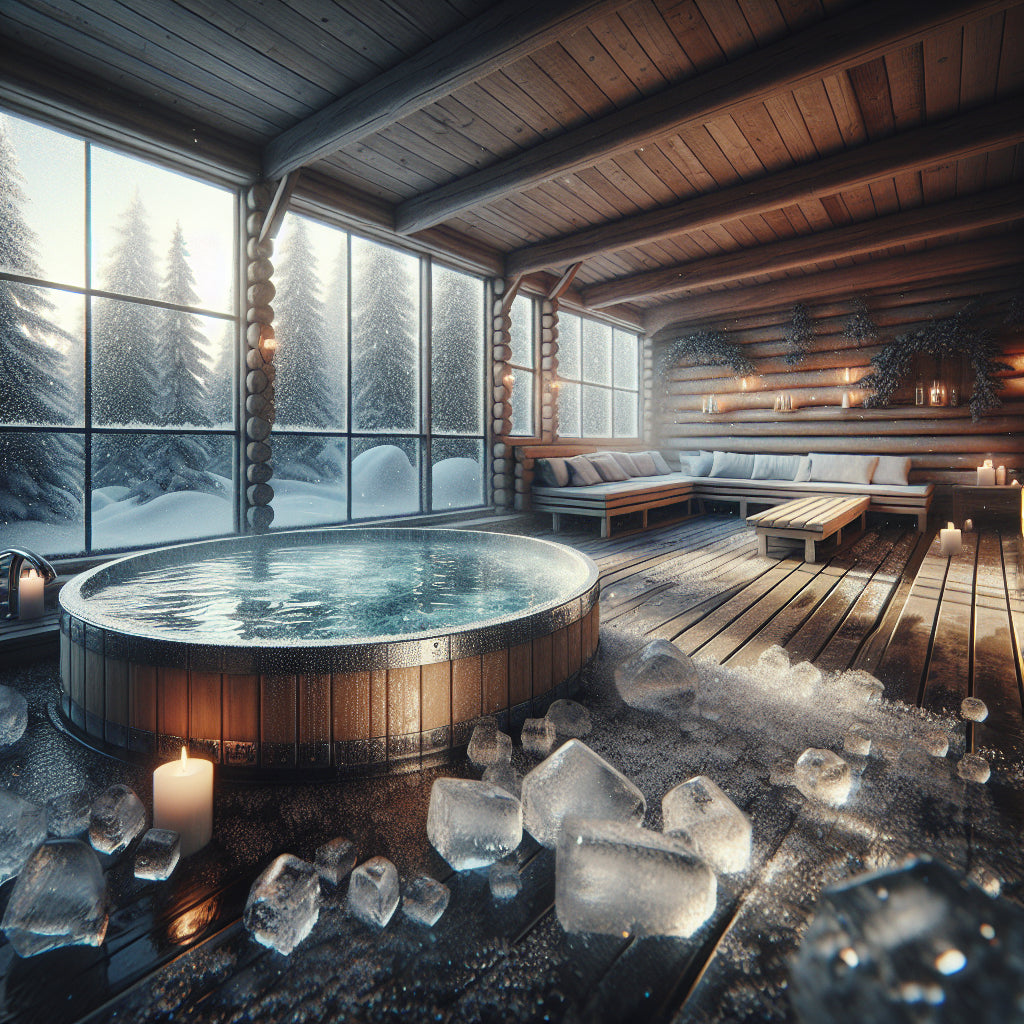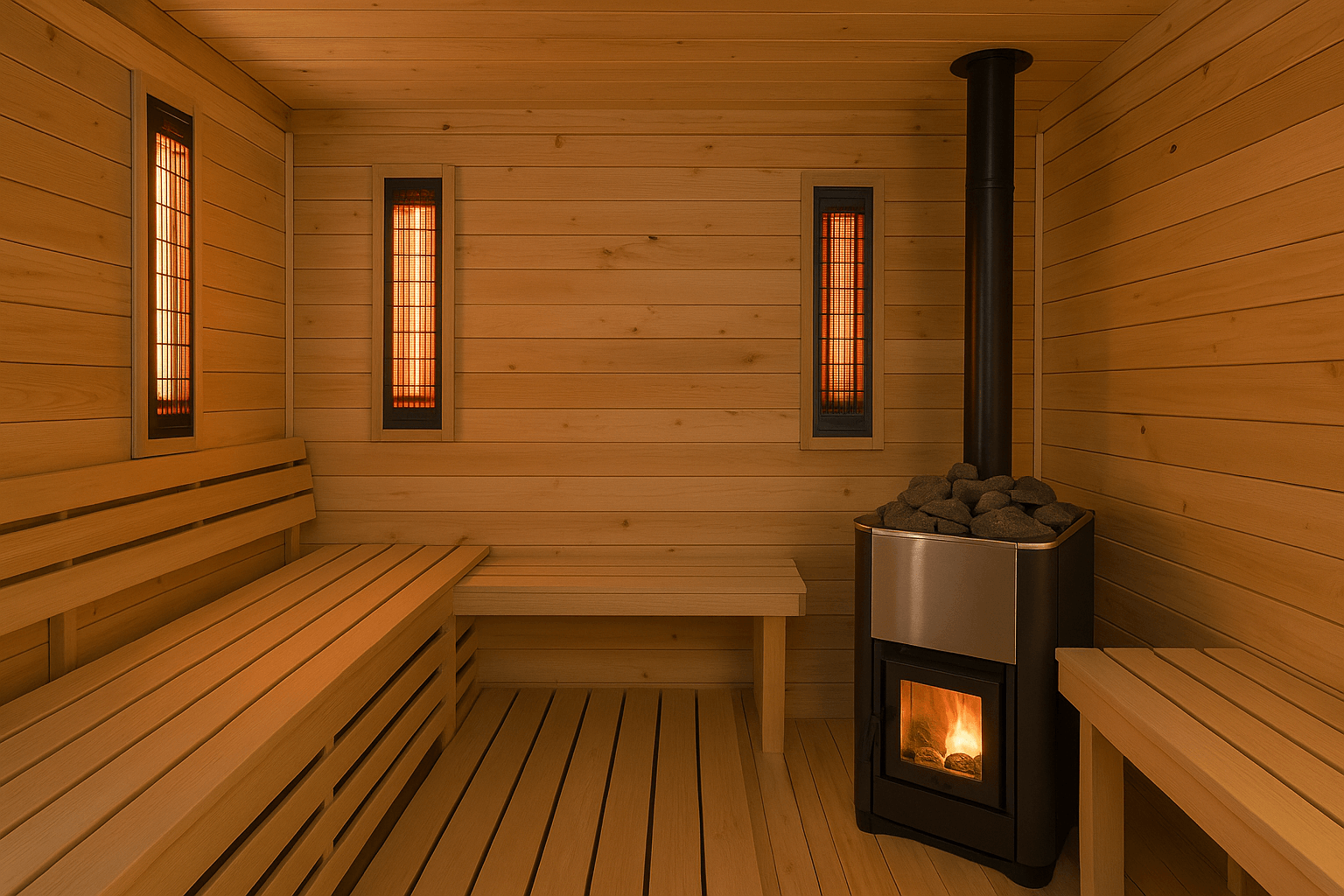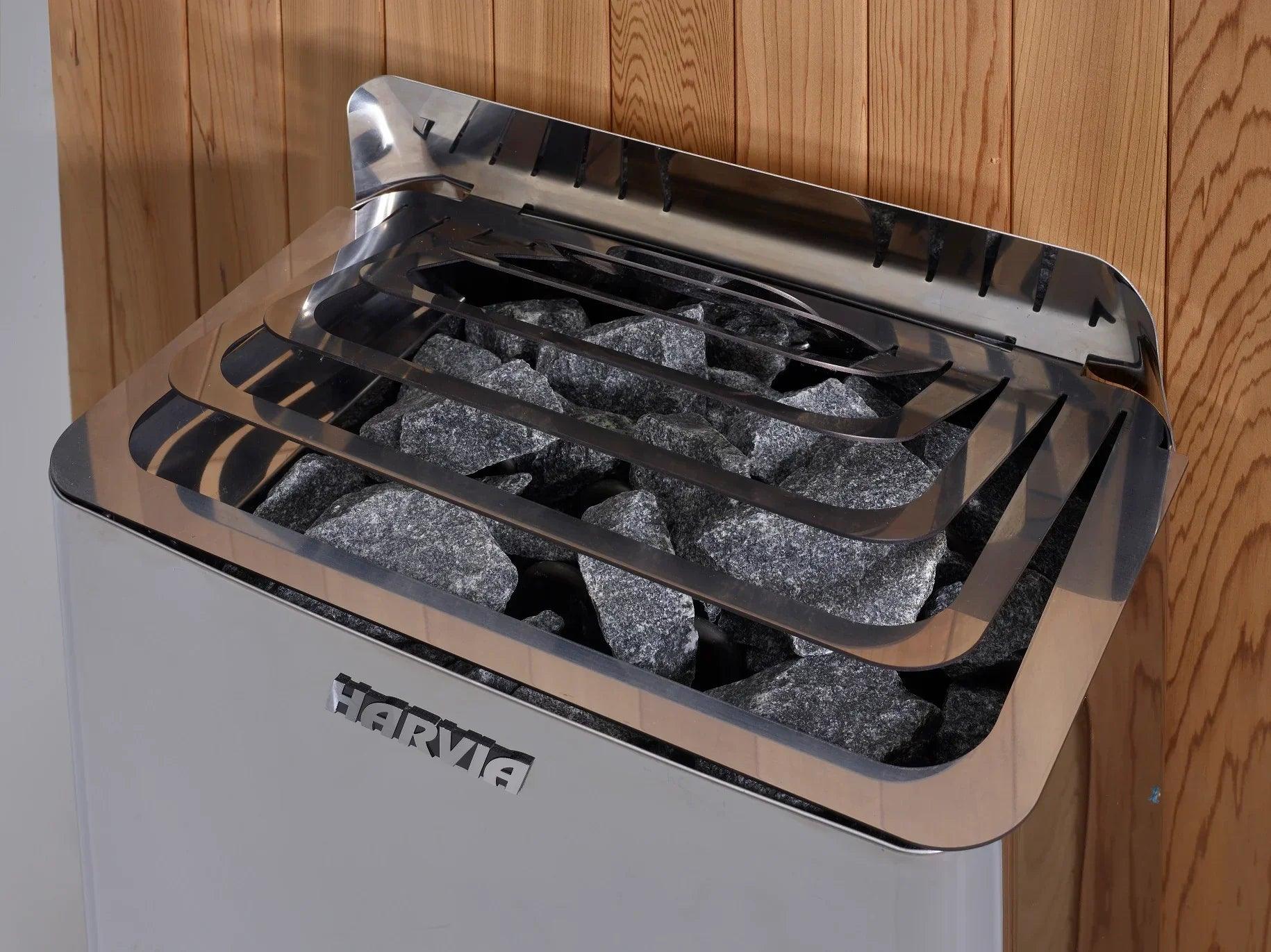Infrared Sauna vs Steam Sauna: A Clinical Comparison of Heat Therapy Modalities
Thermal therapy has been a cornerstone of wellness practices for centuries, with different cultures using heat for healing, relaxation, and detoxification. Today, two of the most popular heat-based therapies are infrared saunas and steam saunas, both commonly found in homes and clinical settings. But how do these two saunas stack up against each other, and which one is better for your specific health needs?
In this article, we’ll dive into a comprehensive, evidence-based comparison between infrared and steam saunas. We’ll break down their core mechanisms, explore their unique health benefits, and weigh in on safety considerations and therapeutic effectiveness. Whether you're a health-conscious consumer, wellness practitioner, or researcher, this guide will provide the insights you need to make an informed decision about which sauna is right for you. Let’s explore the science behind these two powerful heat therapies!

1. Heating Mechanisms and Thermoregulatory Impact
Infrared Radiant Heat: Subcutaneous Penetration
Infrared systems utilize far or full-spectrum radiation to heat the body directly rather than the surrounding air. This allows tissue penetration of up to 5 cm, which influences deeper physiological processes.
-
Average Cabin Temperature: 110–140°F (43–60°C)
-
Energy Source: Carbon or ceramic panels
-
Humidity: Dry (<10%)
Steam Sauna and Steam Rooms: Conductive Heat with High Humidity
Steam units increase ambient humidity to near 100%, raising skin temperature through convection. Unlike radiant systems, steam heat affects only superficial skin and the respiratory tract.
-
Typical Temperature: 160–200°F (71–93°C)
-
Energy Source: Steam generator or heated rocks with water pour
-
Humidity: Saturated (90–100%)
2. Physiological Responses to Heat Exposure
Core Body Temperature Regulation
| Variable | Infrared Heat | Steam Heat |
|---|---|---|
| Heat Penetration | 3–5 cm below dermis | <0.5 cm |
| Sweat Volume | Moderate to high | High |
| Core Temp Elevation | 1.5–2.5°F rise | 2.0–3.0°F rise |
| Oxygen Consumption | Mildly elevated | Significantly elevated |
Infrared modalities result in gradual internal heating, promoting systemic circulation without overwhelming cardiovascular demand. Steam environments create a more acute thermogenic effect, increasing cardiac output and respiratory rate.
A 2018 study published in Complementary Therapies in Medicine found that infrared exposure was better tolerated by individuals with cardiovascular comorbidities compared to moist heat applications.
3. Detoxification: Infrared vs Steam Sauna Efficiency
Both heat methods support toxin excretion via sweat, but their mechanisms differ.
Infrared Sweat Profile:
-
Higher lipid-soluble toxin content
-
Better mobilization of BPA, phthalates, and heavy metals
-
Dry sweat allows more prolonged exposure without dehydration risk
Steam Sweat Profile:
-
Faster onset of perspiration
-
Greater electrolyte loss due to high fluid turnover
-
More effective at clearing superficial skin impurities
A review in Journal of Environmental and Public Health confirmed that infrared sweat contained a greater concentration of cadmium, lead, and mercury than sweat produced via steam exposure.
4. Cardiovascular and Circulatory Benefits
Thermal therapy modulates vascular compliance and reduces blood pressure.
Infrared Outcomes:
-
Increased nitric oxide bioavailability
-
Decreased arterial stiffness over repeated sessions
-
Lowered systolic/diastolic BP in hypertensive individuals
Steam Outcomes:
-
Increased heart rate (up to 150 bpm)
-
Peripheral vasodilation
-
Rapid fluid loss and orthostatic stress in sensitive users
Infrared heat provides a more gradual and sustained cardiovascular load, ideal for long-term circulatory adaptation. In contrast, steam may offer more intense cardiovascular stimulation in shorter durations but can pose risks for individuals with autonomic dysregulation.
5. Immune Function and Hormetic Stress Response
Both systems stimulate mild oxidative stress, promoting adaptive immunity.
-
Infrared: Increases expression of heat shock proteins (HSP70), supporting mitochondrial health and cellular repair
-
Steam: Enhances mucosal immune response in respiratory pathways, useful during flu seasons
Regular users of either system report reduced incidence of upper respiratory infections, though the infrared sauna tends to show stronger data on cellular-level immune adaptation.
6. Skin Health and Dermatological Impact
Infrared Effects:
-
Stimulates fibroblast activity and collagen synthesis
-
Promotes deep detoxification and anti-aging outcomes
-
Supports wound healing and scar reduction
Steam Effects:
-
Opens pores and softens stratum corneum
-
Removes surface-level debris and excess sebum
-
Risk of dermatitis in individuals with sensitive or fungal-prone skin
In a split-trial analysis published in Lasers in Medical Science, infrared light led to a 45% improvement in skin hydration and elasticity compared to steam over 8 weeks.
7. Respiratory Considerations: Dry vs Humid Heat
Steam Room Advantages:
-
Humid air eases bronchial tension and clears mucus
-
Suitable for individuals with asthma or seasonal allergies
Infrared Considerations:
-
Dry heat may dry mucosa but avoids mold-related complications
-
Less likely to exacerbate respiratory infections or fungal issues
In mold-prone environments or for users with chronic sinusitis, infrared systems offer cleaner air and reduced contamination risk.
8. Energy Efficiency, Installation, and Cost
| Criteria | Infrared Units | Steam Units |
|---|---|---|
| Installation | Plug-in (120V or 240V), no plumbing | Requires steam generator, plumbing, tiling |
| Energy Use (30 min) | ~1.6–2.0 kWh | ~5.0–7.5 kWh |
| Maintenance | Minimal (wipe-down, replace bulbs) | High (descaling, mold control) |
Infrared models offer superior energy efficiency and are generally easier to maintain, making them more suitable for long-term residential use.
9. Summary Table: Infrared vs Steam Sauna Comparison
| Factor | Infrared | Steam |
|---|---|---|
| Heat Type | Radiant (direct body heating) | Conductive (air and moisture heating) |
| Sweat Type | Deep tissue, lipid-based | Superficial, high volume |
| Installation | Easy, dry setup | Complex, plumbing & waterproofing required |
| Immune Benefits | Cellular and systemic | Respiratory and mucosal |
| Cardiovascular Load | Moderate | High |
| Maintenance | Low | High (risk of mildew, corrosion) |
10. When to Choose Each Type
Choose Infrared if:
-
You require deep tissue recovery or have cardiovascular limitations.
-
You want low EMF exposure and dry, mold-free operation.
-
You value long-term detox and skin rejuvenation.
Choose Steam if:
-
You suffer from frequent sinus infections or need respiratory relief.
-
You enjoy higher humidity and traditional sauna rituals.
-
You can support higher installation and maintenance needs.
Where to Buy
Both infrared and steam-based heat therapies provide unique health benefits, but their mechanisms, physiological impact, and maintenance requirements differ substantially. While steam offers a more intense, surface-level experience, infrared therapy penetrates deeper and is clinically favored for detoxification, cardiovascular support, and chronic inflammation.
For health-conscious homeowners, the choice between infrared vs steam sauna should be guided by individual health profiles, therapeutic goals, and environmental constraints.
Want to Be Sure? Take Our Quiz
If you're still unsure whether an infrared vs traditional sauna quiz. is best for you, we’ve got you covered! Take our quick and easy sauna quiz to help determine which type of sauna aligns with your preferences and wellness goals. Simply answer a few questions, and you’ll receive personalized results instantly—no email address or personal data required. Your privacy is important to us, so rest assured that no data is collected or stored. Get started now and find the perfect sauna for your needs!









Leave a comment
This site is protected by hCaptcha and the hCaptcha Privacy Policy and Terms of Service apply.